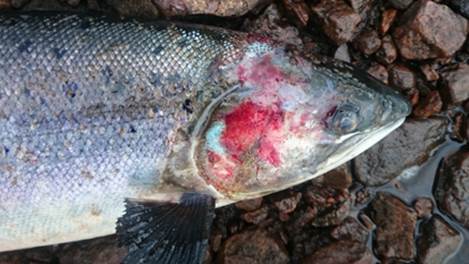Concerns have been voiced over sea lice from farmed salmon pens allegedly having an effect on wild salmon numbers in the Outer Hebrides
The Salmon and Trout Conservation Scotland (SATCS) claim substantial proportion of this year’s wild adult salmon found in the Blackwater River on the west side of Lewis have died or been distressed by parasitic seas lice.
They claim it is a direct result of passing several salmon farms in Loch Roag on their journey back from the Atlantic to the river on the Hebridean isle.
SATCS director Andrew Graham-Stewart said: “We believe that the explosion in lice numbers on the Loch Roag farms, spreading out into the wider sea loch environment, has had deadly implications for wild fish, as they were waiting to enter the Blackwater.
“As the video shows, these fish were literally eaten alive and a large number of adults, that would have bred in the river, have been killed by the lice.
“Laboratory tests have failed to find any other possibility. Adult salmon are well adapted to coping with a few lice but, when plastered with hundreds, they simply do not have a chance.”
There are currently seven farms in Loch Roag.
Figures obtained by SATCS found that the average number of lice found on individual fish from six of the seven farmed pens in Loch Roag ranged from three to eight lice per fish over the course of the summer months.
This figure exceeds the industry code of good practice that sets out that the trigger level for treatment stands at an average of 0.5 lice per fish for the month of June, and one lice per fish for July.
Mr Graham-Stewart added: “This episode represents exceptionally strong evidence of how lice on fish farms, where many hundreds of thousands of fish are packed close together in cages, can increase rapidly in number and release vast numbers of juvenile lice into the surrounding waters.
“This can have absolutely devastating consequences for wild fish populations.
“The loss of a very substantial proportion of the Blackwater River adult salmon run this year has severe implications for spawning and thus future salmon numbers.
“Furthermore, if sea lice numbers were high during May and June, then migrating wild juvenile salmon are likely to have been badly infested, compromising their survival chances.”
